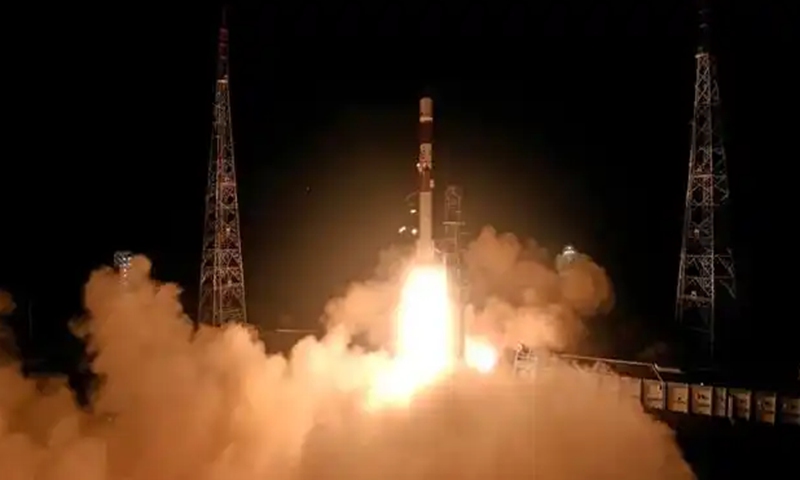India has become the fourth country in the world to successfully achieve an unmanned docking in space following the US, Russia and China, as two small spacecraft completed the docking maneuver in low-Earth orbit on Thursday, which the Indian space agency described as “a historic moment” for the nation.
The successful SpaDeX mission “is a significant stepping stone for India’s ambitious space missions in the years to come,” Indian Prime Minister Narendra Modi said on X, as reported by Reuters.
Chinese space enthusiasts have also taken note of this news and some of them have praised it, but observers noted that there’s still a gap in technology if the country is to achieve manned spacecraft docking.
The Indian space agency’s mission, the Space Docking Experiment (SpaDex), involved deploying two small spacecraft, weighing about 220 kilograms each, into low-Earth orbit. The two spacecraft, Target and Chaser, blasted off from the Satish Dhawan Space Center in southern Andhra Pradesh state on December 30, 2024 aboard an Indian-made PSLV rocket, CNN reported.
“Domestically developed docking technology will be crucial if India is to succeed in advancing its ambition of putting an Indian national on the moon, building a home-grown space station and returning lunar samples,” according to the Indian Space Research Organization.
As part of the mission, the docked spacecraft will also demonstrate the transfer of electric power between them once they are linked, per the CNN report. This is essential for operating in-space robotics, spacecraft control and payload operations during future missions.
“After going through many twists and turns, India finally made it, becoming the fourth country in the world with independent in-orbit docking capability.” “India has a strong will to strive for self-improvement!” “Let’s have dumplings to celebrate this moment,” exclaimed Chinese netizens on X-like social media platform Sina Weibo.
“It’s definitely a milestone. The successful docking of the two spacecraft implies that they have achieved a series of challenging maneuvers, such as orbital rendezvous, accurate positioning and navigation. The docking requires close coordination of various sensors, whatever the size,” Wang Yanan, chief editor of Aerospace Knowledge magazine, told the Global Times on Thursday.
However, Wang noted that the docking of small spacecraft this time can’t yet directly support the technologies needed for human spaceflight. “Manned space station launches have a mass of multiple tons, and manned spacecraft need not only power transfer but also fuel transfer, and the exchange of personnel and supplies. This requires the diameter of the docking port to be expanded to a corresponding level,” Wang said.
Given that the spacecraft was just a scaled-down model, Kang Guohua, a senior member of the Chinese Society of Astronautics and professor of Aerospace Engineering at Nanjing University of Aeronautics and Astronautics, said there’s still a gap compared to the docking of ton-class spacecraft. “But space technology always advances step by step,” he said.
“India’s space development has been remarkable in recent years, having achieved not only docking ability but also lunar landing in 2023 and reaching Mars in 2014. India has ambitious space plans and shouldn’t be underestimated,” Kang told the Global Times on Thursday.
Speaking of future China-India space cooperation, Wang said there is good potential for collaboration – if China’s space station is to welcome more international players, India can dock its module to it and obtain research results more quickly. But this depends on India’s strategic choice, the expert said.
If India chooses to develop its space station independently, it must overcome more challenges. So far, India has not made substantial breakthroughs in manned spaceflightand rockets, which require extremely high reliability and need to solve problems such as the harsh space environment, life support and emergency escape technology.
“We do hope that as a major developing country, India can make new progress in manned spaceflight. If India makes greater breakthroughs, there may be more room for future cooperation between China and India,” Wang said.
Source: https://www.globaltimes.cn/page/202501/1327047.shtml



